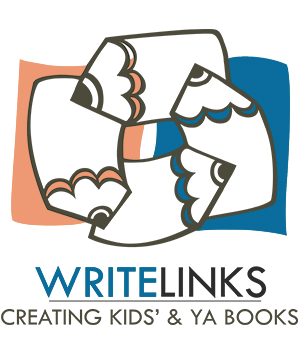
The Criteria for Children’s Literary Awards – with speaker Mia Macrossan
 The dream of many writers is for their books to win awards. It brings prestige, money, increased sales, and affirmation. But how to win them?
The dream of many writers is for their books to win awards. It brings prestige, money, increased sales, and affirmation. But how to win them?
While no one can give the magic formula for this, this October, Write Links hosted a workshop on “The Criteria for Children’s Literary Awards” with special guest, Mia Macrossan.
Mia is eminently qualified for this task, being a former CBCA children’s book of the year judge, an Aurealis judge, and a Queensland Literary awards judge. She founded the Last Tuesday Children’s Book Club for adults who love to read and discuss children’s books. She also reviews for Magpies, Reading Time, 4MBS Radio, and Story Links, which she coordinates.
Mia first wished to point out “that there are many awards each with their different method of judging and with different selection criteria.” Also, each judge has their own take on things, not to mention that books vary so much, and both new and established authors try new things.
The U.K. alone have 53 awards, with the most prestigious being the Carnegie and Kate Greenaway. In the U.S. it is the Newberry and Caldecott medals. Australia’s most prestigious is the CBCA Book Week awards. Each state also has a Premier’s Award, and there’s a national Prime Minister’s award. There are also genre specific such as Aurialis, which includes a children’s category.
The criteria for some of the overseas awards are:
- It should create an outstanding reading experience.
- A good book will bite you on the nose.
- You should go through a real experience that you will remember.
- Provide pleasure.
- Synergy between the words and pictures.
Mia’s talk was so rich with information that I had trouble keeping up. She sent me this list of criteria that apply to all awards:
- Literary merit – aesthetic qualities of language, standing the test of time, realistic characters.
- Cohesiveness – language, theme, style, plot
- Appeal to the implied readership
- Quality – illustrations, book design, production, editing, printing and binding
- Originality in the treatment of literary elements as they apply to the form of the work
(Each award would have more criteria, but vary between awards.)
CBCA wants the books to be original; help readers to understand more about themselves, and help them to improve the world. It should have timeless quality.
Mia then went through a few winners such as The Lie Tree by Francis Hardinge that won the UK’s Costa Book Award both children’s and overall, and Runt by Craig Silvey which was a winner in this year’s CBCA awards. She noted that Runt wasn’t selected in the Premier’s book awards, so the criteria and individual judges’ opinions can vary.
There was no time to cover picture books, so Mia may give another talk on the criteria for them in the future. By the end of this very rich talk, it dawned on me that I can’t possibly think about all these things when writing. But it might be useful to think about some as I go through the editing stages.
Mia ended with a few things to think about when writing:
- How it is written – the writing style – the voice of the author, how language is used
- Originality – there are no new stories but original writers manage to put a whole new spin on things, making the old new, asking us to look at the world anew
- All stories have a theme, don’t preach or teach, a theme emerges from the characters and plot
- Write from the heart but use your brain to do it.
by Tyrion Perkins



